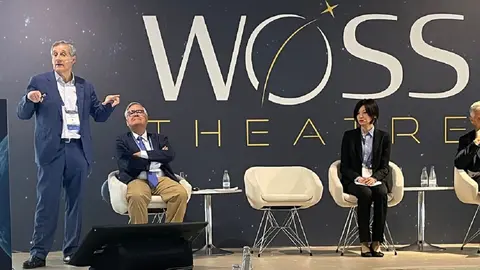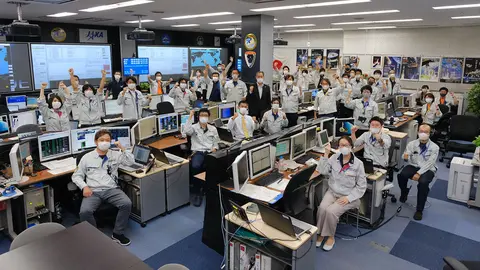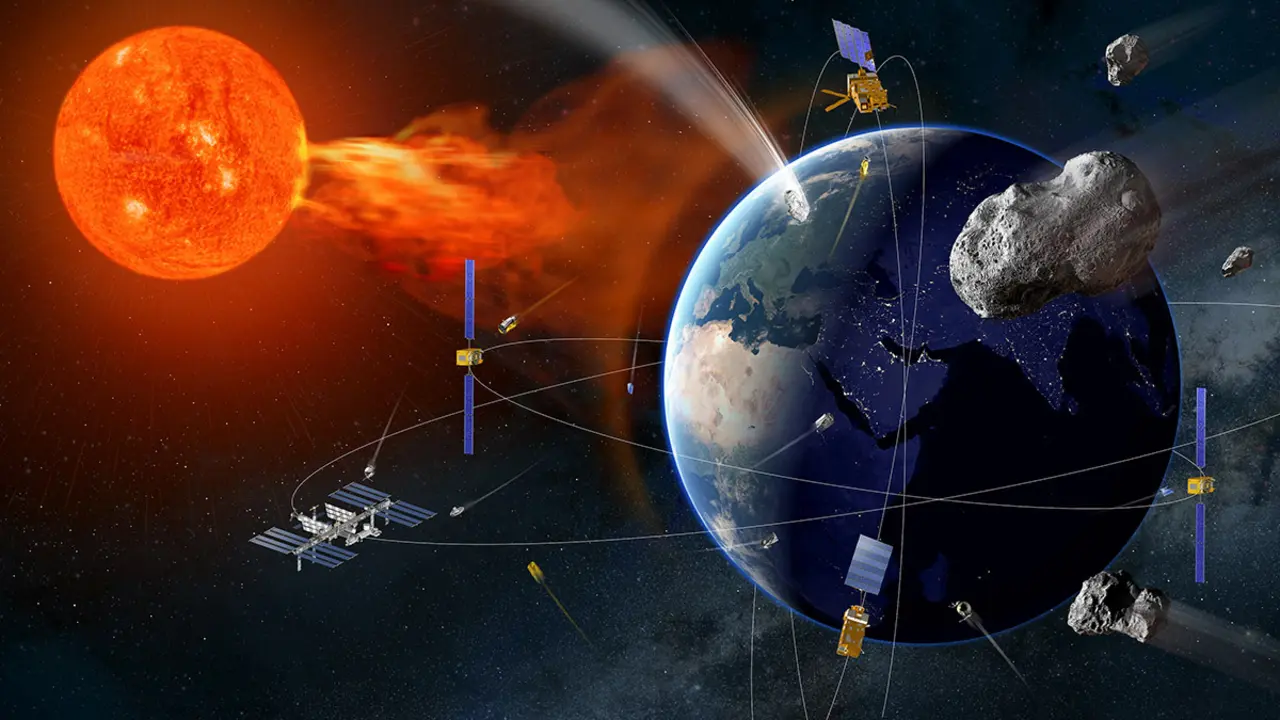ESA CEO: "Resources on Earth will run out and we need to colonise other environments as soon as possible"

In the opinion of the director general of the Spanish Space Agency, Miguel Belló, "our resources on Earth for the population will run out, so we need to colonise other environments and the sooner... the better".
He made this statement in Baku, capital of the Central Asian nation of Azerbaijan, at the plenary session entitled "The era of lunar exploration has begun" of the 74th International Astronautical Congress, which closes today, Friday 6 October.
Miguel Belló also highlighted the importance of NASA's Artemis 2 mission to the Moon, which is scheduled to take off in November 2024. For the first time in a trip to the Selene orbit it will have a mixed crew of four astronauts, one of them a woman, which "will inspire more women to want to go into space", he stressed.

Artemis 3 is scheduled for December 2025, which will also include a woman, "who on that occasion will actually set foot on the surface of the moon". As a connoisseur of the space sector on a national and international scale, Belló stated that the sector "needs young people who are committed to entering the space industry".
The head of the ESA also pointed out that the percentage of female talent in the Spanish space industry is around 20 percent, so "we must encourage actions aimed at increasing this percentage among young women". This includes public relations actions carried out by astronauts, which "promote vocations, especially among women".

Increasing the protection of astronauts
Alongside the Spaniard, three other personalities from the global space ecosystem have expressed their views. NASA biologist Sarmila Bhattacharya warned that "low gravity and high radiation cause undesirable neurological and physiological effects on humans on long lunar and Martian missions". This is what the heads of human spaceflight technologies at NASA and the Japan Space Agency (JAXA), James Free and Hiroshi Sasaki, respectively, are trying to alleviate by developing more efficient survival and protection systems.
NASA took advantage of the gathering of the world's space elite in Baku to hold a top-level meeting on the Artemis agreements, non-binding legal rules that define the principles for safe and sustainable space exploration. The session was led by NASA Deputy Administrator Pamela Melroy, seconded by the presidents of the Polish (POLSA) and Japanese (JAXA) space agencies, Grzegorz Wrochna and Hiroshi Yamakawa, respectively.
If at the meeting held at the IAC in Paris in 2022 NASA managed to bring together the heads of the agencies of the 20 countries that had already signed the Artemis Agreements - Australia, Bahrain, Brazil, Canada, Colombia, France, Israel, Italy, Japan, Korea, Luxembourg, Mexico, New Zealand, Poland, Romania, Saudi Arabia, Singapore, Ukraine, United Kingdom and United Emirates -, Baku brought together the heads of the 28 institutions that have signed the agreements to date, including Spain.

The participants discussed two main issues. Firstly, how to avoid interference between the lunar projects of the different countries that have already announced or are planning to launch missions to the South Pole of the Moon.
"There are more than a dozen missions planned to the moon's south pole," it was noted. This flurry of lunar activities could, for example, lead to interference in communications, which makes it advisable to "coordinate the frequencies to be used", said one of the Spanish participants at the meeting.

Avoiding degradation of the lunar surface
Another topic of great interest discussed by the senior managers of the Artemis agencies was to consider rules to avoid or mitigate the presence of debris on the surface, as well as to reduce the harmful effects of the rocket engines of the surface modules when they are in their descent stage near the surface of an extraterrestrial star.
The issue is critical with regard to the Moon. The slip projected by the engines onto the regolith on the lunar surface - the thin layer of soil that covers solid planetary bodies - causes risks and hazards.

For example, it causes displacement of small rocks, dust that obscures the surroundings, contamination by high-energy particles. On top of that, it causes craters of varying depth in the descent zone, which change the original state of the surface. This is called the PSI effect or Plume Surface Interaction.
Under the leadership of the Japan Aerospace Exploration Agency (JAXA), the participants have agreed to establish a database of information and parameters for all announced lunar missions. With this, they hope to identify coincidences in lunar landing areas and in the use of frequencies to avoid interference and misunderstandings.

With regard to Spain's participation, the ESA representatives, headed by Miguel Belló, put on the table the fields of activity dominated by Spanish industry, including the analysis of exploration missions, the development of guidance, control and navigation systems, thermal control and power equipment, and the development of communications antennas and docking systems.











